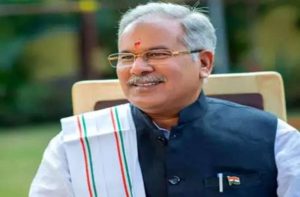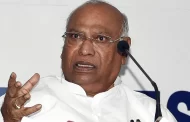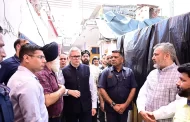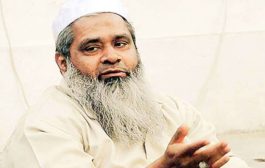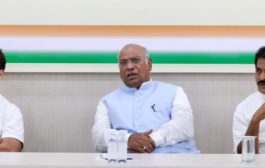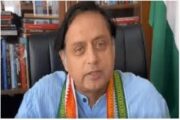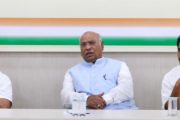Dr Raghuram Rajan tells Rahul Gandhi that infrastructure and public transport, besides health, education and administration will pose both challenges and opportunities for India in post-COVID world

The world will have to rethink almost everything in the post-COVID world, says economist and former RBI Governor in a conversation with Rahul Gandhi, former Congress president and MP from Wyanad.
There is a great sense of disempowerment all over the world, Dr Rajansays, and adds that while the centralized authoritarian model –in a world where people are powerless—is sometimes appealing, historically it has put too much weight on that centre, which eventually collapses.
Here is the full transcript of the conversation:
RG: There are a lot of questions in people’s minds about what is going on and what is going to happen with this virus and in particular with our economy. I thought an interesting way to answer some of those questions for myself and for some of those people would be to have a conversation with you and get a sense of what you are thinking.
RR: Thanks for having me. Thanks for opening this conversation. I think it is important in these times to have as much information on these issues as one can get and for the public to be as informed as possible.
RG: One of the big issues that I have is how we should think about opening the economy. Which are the parts of the economy you think are critical to be opened up and what is the sequence of opening up?
RR: It is a great question. Because as we turn from trying to bend the curve on infections and preventing hospitals/medical facilities from being overwhelmed, we have to start thinking about restarting people’s livelihoods. It is all too easy to cover a lockdown forever, but obviously that is unsustainable for the economy.
RR: You can’t have perfect safety. But you can start opening up in areas that have relatively few cases, with the idea that you will screen as effectively as you can and when you do pick up instances of cases, you will track them down and make sure that everything is contained there…
RR: It has to be a sequencing. First, places where you can maintain distancing. It is not just distancing in the work places, but also distancing to and from the workplace. Transportation structure. Do people have private modes of transport, their cycles or their scooters or even cars. Or do they depend on public transport. How do you maintain distancing in public transport…
RR: So, a lot of work needs to be done both on creating the structures, as well as ensuring that the work place is relatively safe. As well as ensuring that if there are accidents, if there are fresh cases, how do we isolate quickly without having to go to a second or a third lockdown. Those will be devastating if we have to go there.
RG: That’s what a lot of people say; that if you get into a cyclical lockdown, if you open up and are forced to shut down… open and forced to shut down again that is devastating for economic activity because it would completely destroy trust. Would you agree with that?
RR: I think that is right. Take even a second lockdown. Which means you haven’t been completely successful in reopening. That raises questions that if you reopen, will you go into a third lockdown. So, it does diminish credibility.
RR: That said I don’t think we have to aim for a 100% success. That is 0 cases. That is unachievable. What we have to do is manage the reopening i.e. when there are cases, we isolate them.
RG: But at the heart of that management, knowing which areas are having heavy infections, the heart of it is of course testing. There is a sense in India that the testing capability is in itself limited. For a big country, our ability to test like the United States or the European Countries is comparatively limited. How would you think about it… with the low level of testing…
RR: Good question. Take the USA for now. It has ramped up to 150,000 tests a day. But the consensus among the experts, especially the epidemiologists, is that to really be confident about opening up is, you need to treble that to about 500,000 tests per day at least and some are talking of tests in millions.
RR: Just multiply by four for India’s population and you are talking about two million tests a day if you have to get to the level of confidence you have in the United States. We are nowhere near that at 25,000-30,000 tests a day.
RR: But we have to be cleverer about opening up. Perhaps do mass testing. Take a mass sample, say 1000 samples and check if there is any sign of the virus in those mass samples. If you do find it, go deeper into the sample and check who it might be. This way it would reduce the burden on our test infrastructure and allow us to vet much more. In some sense less intensive, but we have to be cleverer since we simply cannot wait till we have that kind of testing.
RG: There is going to be the impact of the virus, and after some time there is going to be impact on the economy. A sort of blowback that is going to come a couple of months from now. How do you make the balance between fighting the virus right now and fighting the consequence of the virus 3-4 months down the line…
RR: You have to do both right now. You can’t wait to see what happens. Because even as you are fighting the virus, the rest of the economy is atrophying in lockdown. Certainly people need to be fed. Situation of migrants on the move, they need shelter, perhaps medical facilities too. This is something that has to be done simultaneously.
I think there has to be prioritisation. Our capacities and resources are limited. Our fiscal resources are more limited than the West. What we need to do is to decide, how do we keep this economy together. When we reopen up, it is sort of able to walk off the sick bed and not be dead at that point.
Most immediately, keep people well and alive. Food is extremely important. Places where public distribution system doesn’t go, Amartya Sen, Abhijeet Bannerjee and I have talked about temporary ration cards. But you have to treat this pandemic as a situation that is unprecedented.
We need to break norms to tackle what is needed. While keeping in mind that there are overall budgetary limits. There are only so many resources that we have.
RG: What do you think about the agricultural sector and the workers. Migrant workers. How should we be thinking about their finances…
RR: This is where the efforts we have made in Direct Benefits Transfer (DBT) needs to be realised at this point. All the ways we transfer to relatively poor people- we need to take a call on that. We have different ways of accessing through widow pensions, MGNREGA rolls. And we need to say that look these are people who don’t have a job, who don’t have a livelihood and for the next 3-4 months while the uncertainty is on, we are going to support them.
But in terms of priority, keeping people alive and keeping them from going onto the street protesting or going out looking for work during lockdown is probably useful at the time of lockdown.
We need to find ways of getting both money as well as food through PDS to as many of these people as we can.
RG: Dr. Rajan, how much money will be required to help the poor to give direct cash (to the poorest)?
RR: Approx. 65,000 crores. Our GDP is 200 lakh Crore, out of that 65,000 Crore isn’t that much. We can do it. If it is to save the lives of the poor, it must be done
RG: Right now, India is in a difficult situation. But after COVID pandemic will India gain any strategic advantage because of this pandemic? Will there be any global changes which India could take advantage of…in what way is the world likely to change according to you.
RR: These kinds of incidents rarely have positives for any country. There are ways countries can take advantage of. What I think we can say is that there will have to be a rethinking of everything in the global economy once we are out of this.
If there is opportunity for India, it is in shaping that dialogue. Being more of a leader in that dialogue because it is not one of the two big warring parties. But it is a big enough country to have its voice heard in the global economy.
In this situation, India can find opportunities for its industries, for its supply chains. But most importantly, we can try and mould the dialogue towards one which has greater place for more countries in the global order, a multi polar global order rather than a single or a bipolar global order.
RG: Don’t you think there is a crisis of centralisation. There is too much centralisation of power taking place and the conversations are stopping. Conversations would help a lot of these problems that you are talking about. But it is breaking for some reason.
RR: I do think decentralisation is important both for bringing more local information to work but also about giving empowerment to the people. What you see across the world is a great sense of disempowerment. Decisions are being made elsewhere, but not by me.
I have a vote but that elects somebody in a far-off place. My local panchayat, state government has less power. They don’t feel they can have a voice in anything. So, they become prey to different forces.
I would ask you the same question, do you think Panchayati Raj which Rajiv Gandhi brought back… what effect has that had and has it been beneficial?
RG: It’s had a huge effect, but I’m sorry to say it is in retreat. So, lot of the forward movement that had taken place on Panchayati Raj, we are sort of moving back to this bureaucratic DM based structure. If you look at the southern states, they are doing a better job because they are more decentralised. The northern states are centralising power and they are taking away power from the panchayats and grassroots organisation. The closer the decisions are taken to people, the more ability they have to keep a check. I think it is an experiment worth doing.
But what do you think is causing this at a global level? What do you think is causing this massive centralisation and stopping of this conversation? Do you think there is a central cause or there are a number of things?
RR: I do think there is a cause and I think it is the global markets. There is a sense that if markets globalise, market participants i.e firms want to see the same rules everywhere, they want to see the same coordinating structure everywhere, the same government everywhere. Because that then gives them confidence.
That attempt at uniformity takes away power from the local or national governments. In addition, there is the bureaucratic temptation to centralise. If I can grab power, why not. So that is a constant desire. If you are providing funding to the states, here are the rules you must obey to get this funding, and not ‘I will give you funds, no questions asked because I know that you have also been elected. And you will have to have a sense of what is appropriate for you…
RG: There is a new model out, which is the authoritarian model; which is questioning the liberal model. It is a different way of doing work and it seems to be rising in more and more places. Do you think it is going to be pushed back?
RR: I don’t know. The central authoritarian model, the strong figure, in a world where you are powerless, is sometimes appealing. Especially if you can develop a personal rapport with that figure. Especially if you feel like they believe in me, they care for the people.
The problem with that is that the authoritarian figure can develop their own sense of ‘I am the power of the people’ and therefore whatever I say goes. My rules apply and not the checks and balances, not the institutions, not the decentralised structure. Everything should go through me.
Historically what has happened is that it has put too much weight on that centre and eventually that collapses.
RG: But clearly something has gone wrong with the global economic system. That is very clear. It is not working. Would that be a fair statement?
RR: I think it is a fair statement that it is not working for a lot of people. The growing inequality of wealth and income in developed countries is certainly a source of concern. The precariousness of jobs, the so-called precariat is another source of concern. You have these gig jobs without knowing if you’ll have any income tomorrow.
RR: We have seen during this pandemic that many of these people do not have any support. They have lost out on both their incomes and safety net.
RR: Therefore, what we have today is both a problem of slowing growth and a more equitable distribution. We can’t dispense with markets; we do need growth. We also have a problem of stuck or inadequate distribution. People aren’t getting the fruits of that growth in the same way. Many people are being left out. So, we need to think about both sides. That’s why I feel rather than focusing on distributing output, focusing on distributing opportunities (will work better).
RG: It is interesting that you said that infrastructure connects people and that gives opportunity. But if there is division and hatred, that disconnects people. That is also infrastructure. There is an infrastructure of division and an infrastructure of hatred and that causes as big a problem.
RR: Absolutely. Social harmony is a public good. Having everyone believe that they are a part of this system, an equal part of the system is essential. We cannot afford to be a house divided. Especially in these times when our challenges are so big. So, I would prefer to put… our founding fathers, the people who wrote our Constitution and the early administrations…that’s something I’ve been spending some time relearning. Those people realised that there were some issues that you were to put on a shelf and not touch. Because if we got into those issues, we would spend a lot of time fighting each other.
RG: Also, you tend to divide and look backwards into history when you are struggling with a forward vision. I like what you said about how India needs a new vision. What would be the elements of that, in your view. Of course, you mentioned infrastructure, education, healthcare. How would it be different from the last 30 years. What would be the pillars that would be different…
RR: I think on the one hand you need to create capabilities. The elements of creating capabilities is better education, better healthcare, better infrastructure. Remember when we talk about creating these capabilities, we have to walk the talk.
But we also need to rethink how our industrial and market ecosystems look like. We still have the remnants of the old license permit raj. We need to figure out how we go to a place where the accent is on creating many many more new jobs of a good quality. More freedom, trust but verify is a good idea there.
RG: What has amazed me is how important ‘mahaul’ or sentiment and trust is to economics. One of the things I am finding during this COVID issue is that the real problem is the trust issue. People don’t quite understand what is going to happen next. So, there is fear in the system.
You talk about unemployment. We had a big, high level of unemployment, that is now going to be massive. How do we think about unemployment going forward., 2-3 months from now when the impact of this thing hits…
RR: The numbers are really worrying. If you look at CMIE, virtually another 100 milllion MORE people have been put out of work as a result of COVID. 50 million through unemployment and 60 million through leaving the labour force. You can dispute what the particular survey does or says, but this is the only data we have. And the numbers are mind boggling. I think it says, we need to open up in a measured way but as fast as possible so that people start having jobs. We don’t have the capacity to support people across the spectrum for too long. Being a relatively poor country, people start out with significantly lower reserves.
But let me throw a question back at you; we see a lot of measures in the USA and Europe based on realities on the ground. The Government in India of course has a different kind of reality that they are facing. What are the big differences in your view between governing in the West and dealing with the reality of life in India…
RG: The scale, first of all. The scale of the problem and at its heart the financial scale of the problem. The inequality and the nature of the inequality. Things like caste, the way Indian society is structured is completely different than American society, as you know.
Some of the ideas that hold India back are deeply embedded and often hidden. So, you have to, I think, there is a lot of, sort of, social change that is required in India and a lot of these problems are different in different states. The politics of Tamil Nadu, the culture of Tamil Nadu, the language of Tamil Nadu, the way the Tamils think is completely different from the way UP-ites think; so you have to model things around them. One blanket solution for the whole of India just will not work, can’t work.
Also, there is an element in our governance system, in our administration system, of control—which is different from the United States. You know we have a District ‘Collector’ as opposed to a ‘Producer’. Right ? So, our idea is always one of control and I don’t think, people say, this is since the British, I don’t think so, I think this is historic, before the British.
The idea of Governance in India is always about trying to control and I think that is one of the challenges that we are facing now. The Covid disease cannot be controlled, it has got to be managed, as you said.
One of the things that sort of annoys me is the level of inequality. This has been the case in India over the last few decades… the level of inequality that you see in India, you simply cannot see in the United States. And so, the type of things I always look at is how to sort of reduce this inequality because I think once a system reaches a very high point, a high level of inequality, then it simply stops to work. You know, I like Gandhiji’s line, just go to the back of the line and see what’s going on at the back of the line. This is a very powerful thing for a politician, it’s underrated, but I think that’s where a lot of the insights come in.
How would you think about going forward, dealing with this inequality? You know it’s visible in Covid also–I mean the way India is treating its poor people, the way we are treating our poor people and migrants vs the way the elite is being treated, two completely different ideas, two completely different India’s. so, how do you merge these two India’s into one?
RR: You know at the bottom of the pyramid, so to speak, we have some ways of making their lives a little better, but we need to think more carefully about reaching everybody there and I think successive Governments have worked on food, on healthcare, on education and no doubt we can do a better job there.
But in terms of challenges, it seems to me that there is certainly an administrative challenge in reaching everywhere and making sure that the level of living is enhanced. But the greater challenge to me lies in the range between the lower middle class and the middle class, which is where we need, in a huge way, jobs, good quality jobs, so that people aren’t dependent on a Sarkari job and the comforts that come with it.
So, this is something that I think we need to work on and this is where I think a tremendous expansion in the economy is absolutely necessary. We’ve seen over the last so many years, a progressive decline in our rate of economic growth when in fact we have so many young people entering the labour force.
So, I would say let us not pick amongst possibilities, but create the opportunity for any kind of area to flourish. If there are mistakes we made in the past, we said this is the only way to go; and think of one of the most successful areas we’ve grown in, software and outsourcing services. Who would have thought that would be India’s strength? And it just emerged, and some people even argue that it emerged only because the Government didn’t pay attention to it. I’m not in that camp, but we need to allow for any possibility and let the enterprise of our people take its course
RG: Well, Thank you. Thank you, Dr. Rajan.
RR: Thank you very much. It was a pleasure talking to you.
RG: And you are safe?
RR: I’m safe. Good luck with everything.
RG: Thank you. Bye

